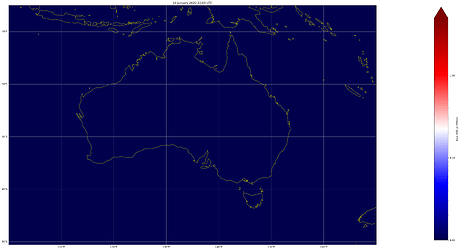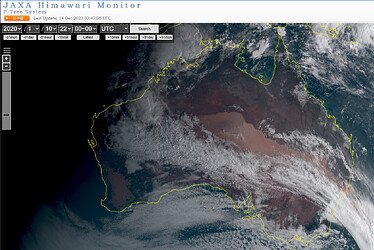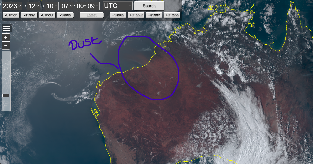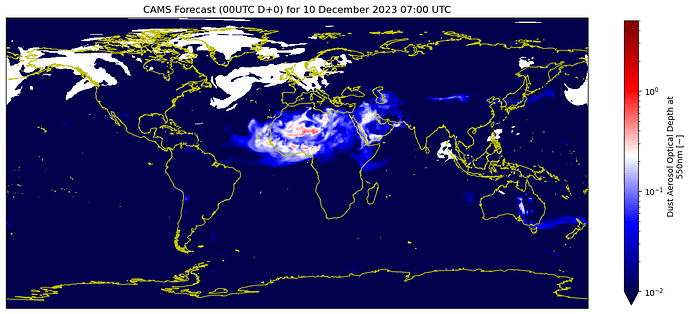As part of a project I'm working on, we are hoping to use the CAMS forecast for dust AOD in our model. We want to use the forecast as we'll hopefully run in in NRT, so we use the latest available 00:00 UTC run that covers the whole local day across Australia, i.e ~18:00 UTC D+0 to ~11:00 UTC D+1 with respect to the forecast run. However, when looking at a notable case-study, it seems the CAMS forecast has completely missed the dust storm over central Australia on 11th January 2020 (see attached figures/images). Is this because of an issue in CAMS and, if so, what is the reason for this?
Thanks,
Daniel
Hi Daniel,
The Dust Source Function (DSF) used in the forecast system at that time had some issues with dust in Australia. This was subsequently fixed in an upgrade to the forecast system, May 2020, so that, for Australia, the DSF uses values provided by Ginoux et al. (2012) for natural+Anthropogenic dust emissions.
I hope this helps. Best regards,
Mark
Hi Mark,
Thanks for the info. After reading you comment, I went back and checked later (after June 2020) forecasts and I can see that there is dust present across SE and central Australia where it should be. However, looking at a very recent and sudden storm that occurred over Western Australia, I can see that CAMS has missed this one (see figures below). Having skimmed over the Ginoux et al. (2012) paper, it seems CAMS might have missed it due to a lack of sources in WA?
Thanks,
Daniel
The recent dust storms in Australia seem to have been a surprise for many, including CAMS (Copernicus Atmosphere Monitoring Service). While CAMS is generally quite accurate with its forecasts, there can be several reasons for discrepancies:
- Rapid Weather Changes: Dust storms can develop quickly and may not always be predicted accurately if they are influenced by sudden weather changes or localized conditions.
- Data Limitations: Forecast models rely on available data, and sometimes, the data input might be incomplete or not up-to-date, affecting the accuracy of the forecast.
- Model Resolution: The resolution of the forecast model plays a crucial role. Higher resolution models can capture smaller-scale phenomena better but are computationally intensive.
- Complexity of Dust Storms: Dust storms are complex meteorological phenomena influenced by a variety of factors, including wind speed, soil moisture, and land use patterns. This complexity can sometimes make precise forecasting challenging.




